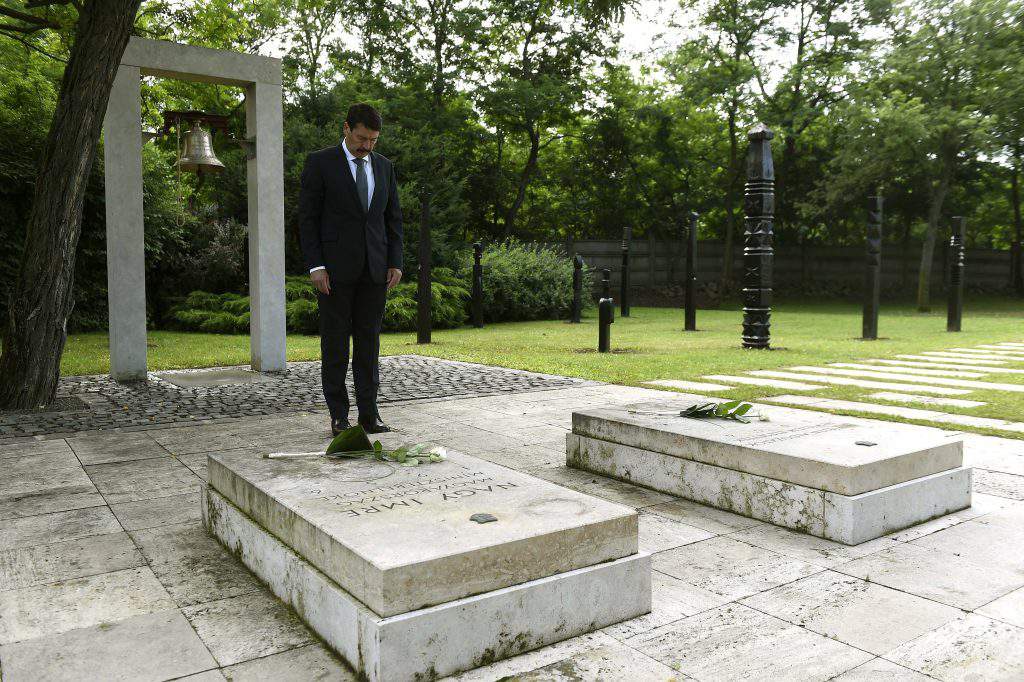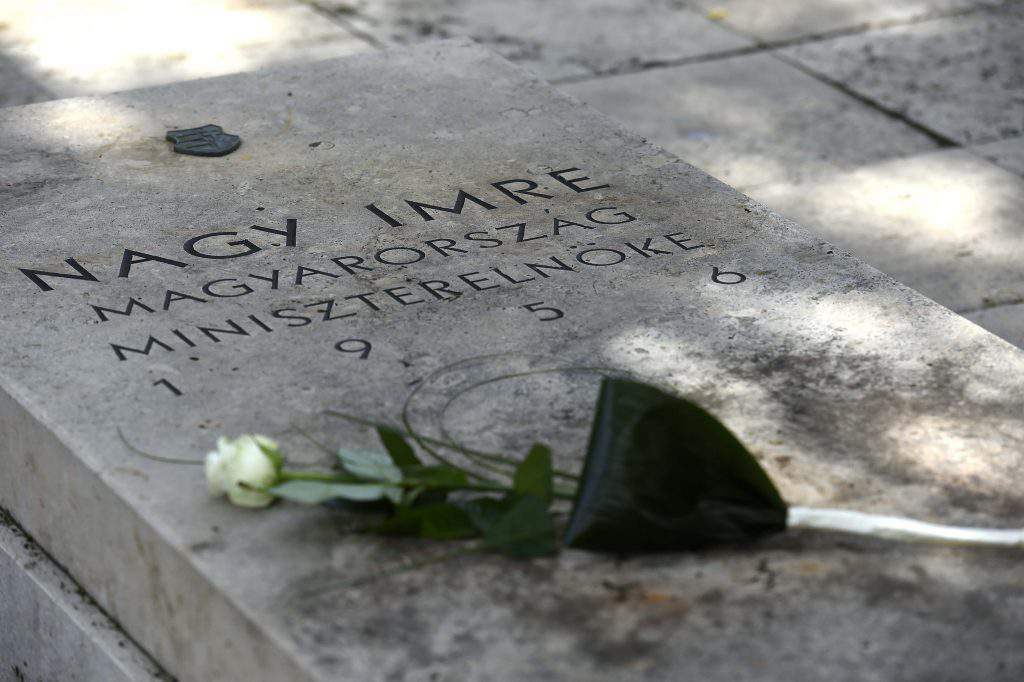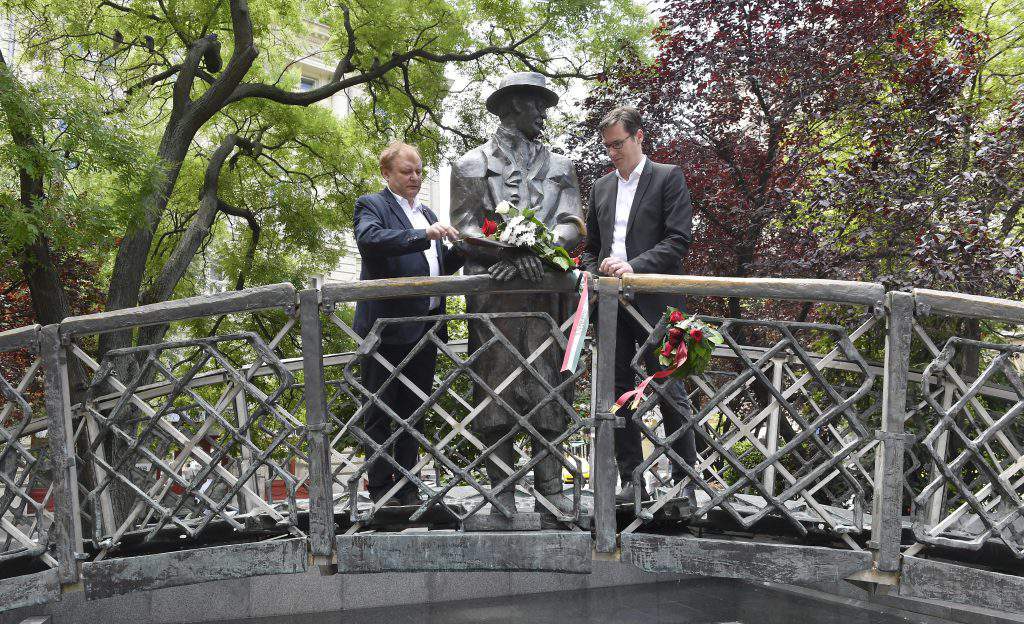Hungary commemorates martyred 1956 PM Imre Nagy

President János Áder laid flowers of commemoration at the tomb of Imre Nagy, Hungary’s former prime minister and other martyrs of the communist retaliation after the failed anti-Soviet revolt of 1956, at the Rákoskeresztúr cemetery on Saturday.
Nagy, Hungary’s legitimate head of government in 1956, was executed on this day 60 years ago. Pál Maléter, defence minister in 1956, journalist Miklós Gimes, and József Szilágyi, the head of the prime minister’s secretariat, were also executed. Géza Losonczy, minister of state at the time, died in prison in 1957.
Nagy and the other martyrs, buried in unmarked graves after their death, were reburied on June 16, 1989.


Socialists, Párbeszéd commemorate martyred 1956 PM
Leaders of the opposition Socialist and Párbeszéd parties commemorated Nagy marking the 60th anniversary of his execution.
Socialist board head István Hiller and Párbeszéd co-leader Gergely Karácsony laid wreaths at the martyred prime minister’s monument in central Budapest.
Karácsony, in his address, referred to the “re-awakening forces of tyranny” and said that “the republic and freedom must again be defended against those powers”. He accused ruling Fidesz of plans to remove Nagy’s statue from the vicinity of Parliament and said that it would be equal to “removing his spirit”.


[button link=”https://dailynewshungary.com/tag/history/” type=”big” color=”red” newwindow=”yes”] Read more articles about HUNGARIAN HISTORY[/button]
Head of the Prime Minister’s Office opens conference on post-1956 trials
Gergely Gulyás, head of the Prime Minister’s Office, on yesterday opened a conference presenting a new database of trials that took place after Hungary’s failed anti-Soviet uprising of 1956, in Budapest.
“We require the knowledge of how the dictatorship functioned and must know who and on what basis made decisions about people’s lives,” Gulyás said in his opening address.
“Though we are often dissatisfied with the situation of the rule of law, we must appreciate the progress that has been made in this area since Hungary’s change of regime,” he said.
The independence of the judiciary must not be harmed in any way, Gulyás added.
The database was compiled by the National Remembrance Committee.
As its first step in documenting the post-1956 retaliations, the committee collaborated with the Kuria, Hungary’s supreme court, and the Chief Public Prosecutor’s Office in publishing the details of 231 people sentenced to death, several hundred investigators, prosecutors and judges on the website perek56.hu.
Photo: MTI
Source: MTI





